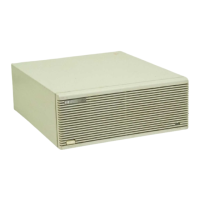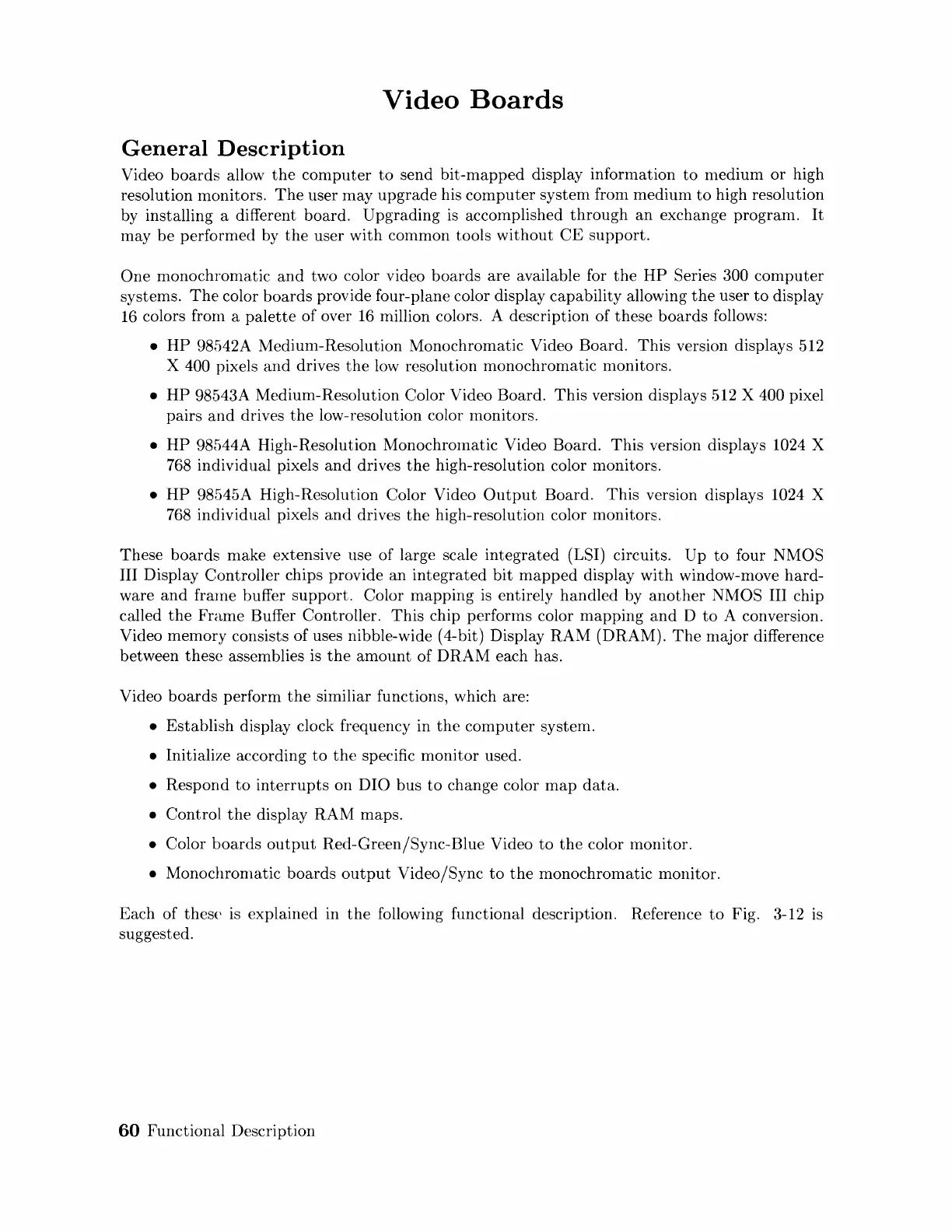Video
Boards
General
Description
Video
boards
allow
the
computer
to
send
bit-mapped
display information
to
medium
or
high
resolution monitors.
The
user may
upgrade
his
computer
system from medium
to
high resolution
by installing a different board. Upgrading
is
accomplished
through
an
exchange program.
It
may
be
performed by
the
user
with
common tools
without
CE
support.
One monochroillatic
and
two color video
boards
are available for
the
HP
Series 300
computer
systems.
The
color
boards
provide four-plane color display capability allowing
the
user
to
display
16
colors from a
palette
of
over
16
million colors. A description of these
boards
follows:
•
HP
98542A Mediulll-Resolution Monochromatic Video Board.
This
version displays 512
X
400 pixels
and
drives
the
low resolution monochromatic monitors.
•
HP
98543A Medium-Resolution Color Video Board.
This
version displays 512 X 400 pixel
pairs
and
drives
the
low-resolution color monitors.
•
HP
98544A High-Resolution Monochromatic Video Board.
This
version displays 1024 X
768 individual pixels
and
drives
the
high-resolution color monitors.
•
HP
98545A High-Resolution Color Video
Output
Board.
This
version displays 1024 X
768 individual pixels
and
drives
the
high-resolution color monitors.
These
boards
make extensive use
of
large scale
integrated
(LSI) circuits. Up
to
four NMOS
III
Display Controller chips provide
an
integrated
bit
mapped
display
with
window-move
hard-
ware
and
frmne buffer
support.
Color
mapping
is
entirely handled by
another
NMOS
III
chip
called
the
Frame
Buffer Controller.
This
chip performs color
mapping
and
D
to
A conversion.
Video memory consists
of
uses nibble-wide (4-bit) Display
RAM
(DRAM).
The
major
difference
between these assemblies is
the
amount
of
DRAM
each has.
Video
boards
perform
the
similiar functions, which are:
•
Establish
display clock frequency in
the
computer
system.
• Initialize according
to
the
specific
monitor
used.
• Respond
to
interrupts
on DIO bus
to
change color
map
data.
• Control
the
display RAM maps.
• Color
boards
output
Red-Green/Sync-Blue Video
to
the
color lnonitor.
• Monochromatic
boards
output
Video/Sync
to
the
monochromatic monitor.
Each of
these
is
explained in
the
following functional description. Reference
to
Fig. 3-12
is
suggested.
60
Functional Description
Artisan Technology Group - Quality Instrumentation ... Guaranteed | (888) 88-SOURCE | www.artisantg.com

